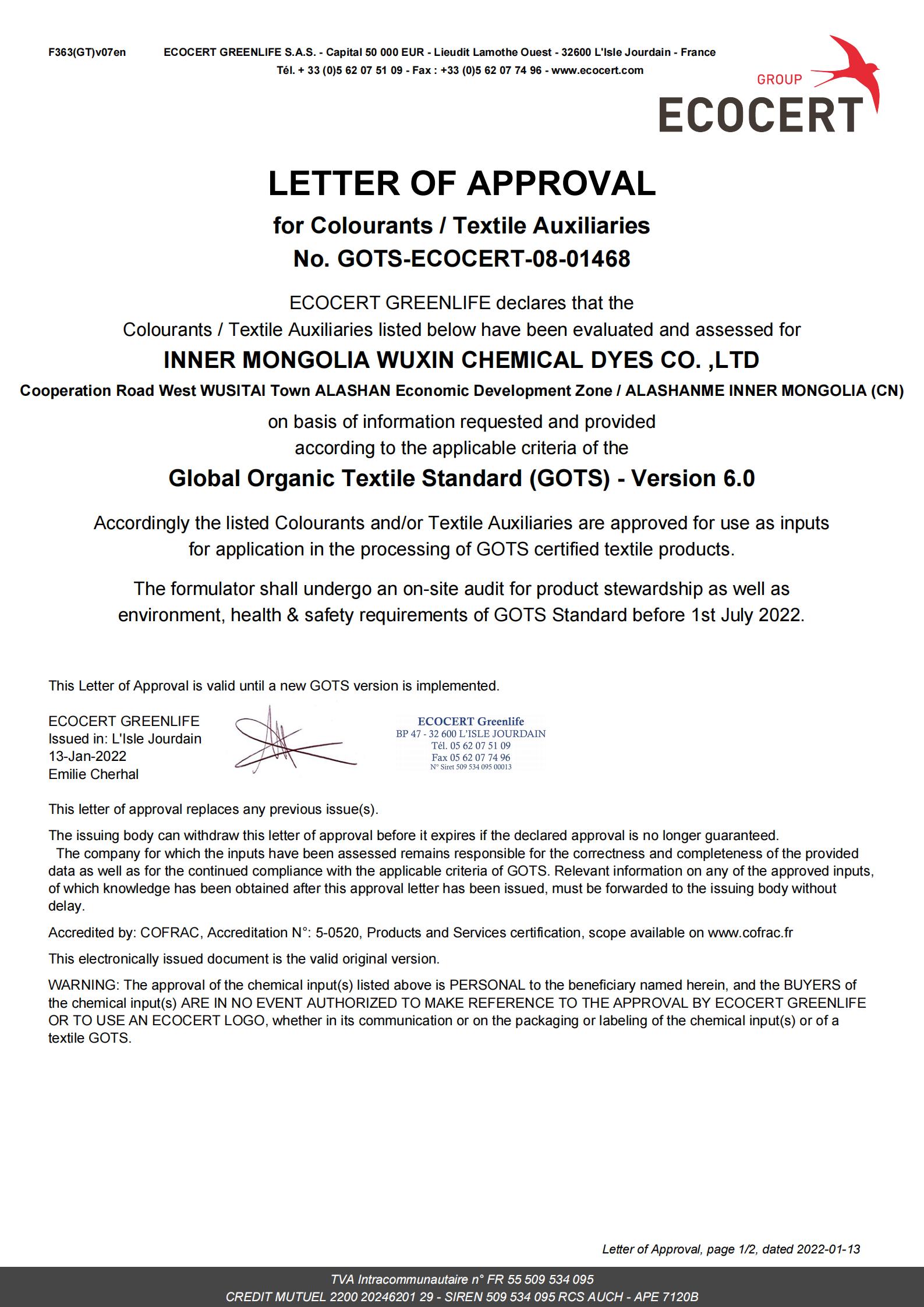famous indigo dye chemistry
The Chemistry of Famous Indigo Dye
Indigo dye, known for its deep blue color, has a rich history and is one of the oldest dyes used for textile coloring. Its chemistry is fascinating and involves a series of complex reactions that transform natural sources into one of the most iconic colors in the world. The dye is primarily derived from plants of the genus Indigofera, particularly Indigofera tinctoria, although it can also be synthesized artificially.
Historical Background
Indigo dye has been used for centuries across various cultures. Ancient civilizations, from the Egyptians to the Indians, valued indigo for its vibrant hue. The process of extracting indigo from plants and using it to dye textiles dates back over 6,000 years. In many instances, the dye was so valuable that it was considered blue gold. Today, while synthetic indigo dominates the market, the traditional methods of extraction are still celebrated for their cultural significance.
The Chemical Structure of Indigo
Indigo is an organic compound with the chemical formula C16H10N2O2. It is classified as a transition metal complex due to its unique structural properties. The molecule consists of two indole units connected by a double bond. This structure is critical for the dye's ability to absorb light, thus producing the rich blue color that indigo is known for.
The indigo molecule can exist in different forms, notably the reduced form known as leucoindigo. In the dyeing process, indigo is first reduced to leucoindigo, a soluble and colorless compound. This reduction is achieved through a chemical reaction involving an alkaline solution, typically using a reducing agent such as sodium dithionite. This transformation allows the dye to penetrate fibers more effectively.
The Dyeing Process
famous indigo dye chemistry

The dyeing process is a remarkable interplay of chemistry and artistry. After the reduction to leucoindigo, the fabric is submerged in the dye bath. Once the fabric is withdrawn and exposed to air, a process known as oxidation occurs. Oxygen from the air reacts with leucoindigo, converting it back to indigo, which precipitates onto the fabric. This striking transformation results in the deep blue color that is characteristic of indigo-dyed textiles.
The bond formed between the indigo and the textile fibers is primarily physical, but there are also chemical interactions that enhance the dye's adherence. Indigo forms strong hydrogen bonds with the cellulose molecules present in cotton fabrics, providing excellent colorfastness. This durability contributed to indigo's popularity, as it could withstand many washes without fading.
Modern Applications and Sustainable Practices
Today, indigo dyeing has evolved with advances in technology, but many artisans still rely on traditional methods. The shift towards sustainable and eco-friendly dyeing practices reflects a growing awareness of environmental issues. Natural indigo is now being rediscovered for its reduced ecological impact compared to synthetic alternatives, which can involve toxic chemicals and generate significant waste.
Moreover, the growing popularity of naturally dyed textiles has sparked interest in preserving traditional dyeing techniques. Many small-scale farmers and artisans are engaged in cultivating indigo plants, thus reviving cultural heritage while promoting sustainability. This resurgence highlights the intersection of chemistry, culture, and environmental stewardship.
Conclusion
The chemistry of indigo dye is a perfect blend of science and art, showcasing the transformative power of nature. From ancient civilizations to modern sustainable practices, the journey of indigo dye illustrates humanity's long-standing relationship with this remarkable color. As we move forward, the appreciation for natural indigo will likely grow, reminding us of our connection to the earth and the intricate chemical processes that create beauty in our world. Whether used in fashion or art, indigo continues to inspire with its vibrant hue and rich history, making it truly iconic.
-
The Timeless Art of Denim Indigo Dye
NewsJul.01,2025
-
The Rise of Sulfur Dyed Denim
NewsJul.01,2025
-
The Rich Revival of the Best Indigo Dye
NewsJul.01,2025
-
The Enduring Strength of Sulphur Black
NewsJul.01,2025
-
The Ancient Art of Chinese Indigo Dye
NewsJul.01,2025
-
Industry Power of Indigo
NewsJul.01,2025
-
Black Sulfur is Leading the Next Wave
NewsJul.01,2025

Sulphur Black
1.Name: sulphur black; Sulfur Black; Sulphur Black 1;
2.Structure formula:
3.Molecule formula: C6H4N2O5
4.CAS No.: 1326-82-5
5.HS code: 32041911
6.Product specification:Appearance:black phosphorus flakes; black liquid

Bromo Indigo; Vat Bromo-Indigo; C.I.Vat Blue 5
1.Name: Bromo indigo; Vat bromo-indigo; C.I.Vat blue 5;
2.Structure formula:
3.Molecule formula: C16H6Br4N2O2
4.CAS No.: 2475-31-2
5.HS code: 3204151000 6.Major usage and instruction: Be mainly used to dye cotton fabrics.

Indigo Blue Vat Blue
1.Name: indigo blue,vat blue 1,
2.Structure formula:
3.Molecule formula: C16H10N2O2
4.. CAS No.: 482-89-3
5.Molecule weight: 262.62
6.HS code: 3204151000
7.Major usage and instruction: Be mainly used to dye cotton fabrics.

